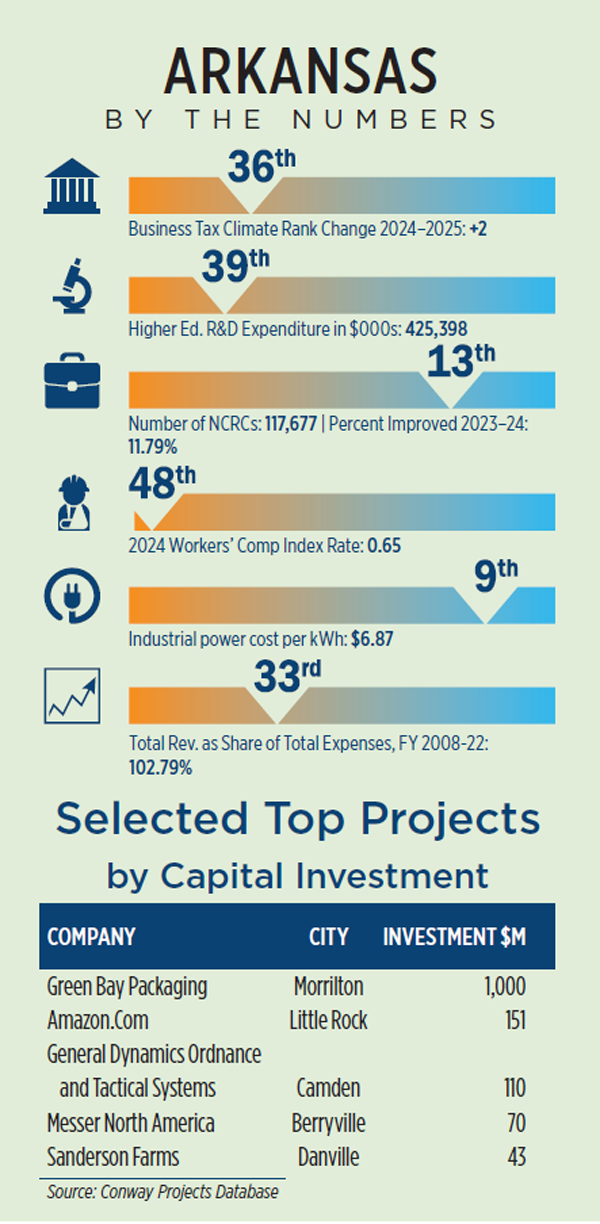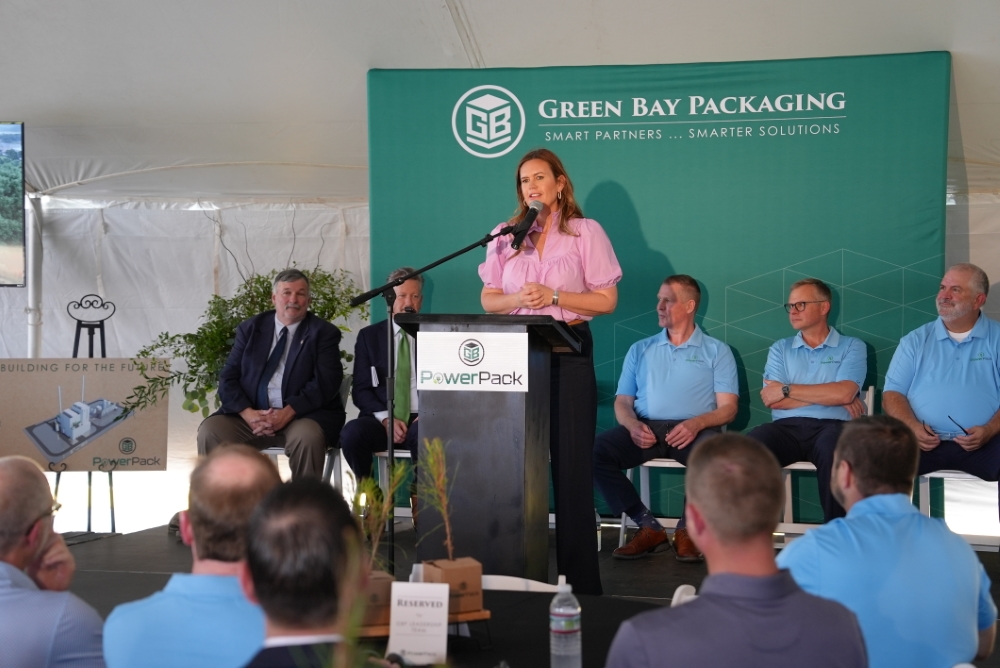Corporate America is following the movement of younger workers.
When Green Bay Packaging broke ground June 3 on a $1 billion paper mill expansion in Morrilton, Arkansas, the event confirmed what many corporate executives already thought about the Natural State: The best things come in small packages.
Morrilton, with just 7,141 people, may be small, but it is mighty. The county seat of 21,189-resident Conway County in central Arkansas, Morrilton has been home to Wisconsin-based Green Bay Packaging for 60 years.
The latest investment by the 92-year-old company — which is valued at $5.3 billion and employs more than 4,500 people across 40 locations in 16 states — adds 300 acres and 35 jobs to the 620 workers already employed at the firm’s Arkansas Kraft Mill in Morrilton. The expansion is the largest capital investment project in the history of central Arkansas.
Code-named Project PowerPack, the expansion will occur over several years and is designed to increase both sustainability and operational efficiency, said Matt Szymanski, vice president of mill operations at Green Bay Packaging.
GBP is no stranger to Arkansas. In addition to its paper mill in Morrilton, the company operates other facilities in central Arkansas including two plants in Plumerville, one in Conway and a separate facility in Morrilton.
The Arkansas River Valley between the Ozarks and Ouachita Mountains has lured corporate facility plant investments for decades and is indicative of the economic growth taking place in small towns across the state, says Clark Cogbill, marketing and communications director for the Arkansas Economic Development Commission.
“Weyerhaeuser at $500 million was the biggest deal of 2024 in Warren. We just did a groundbreaking for them,” Cogbill says. “L3Harris Technologies is investing $193 million to build new rocket motors in Camden. A lot of these investments are going to our smaller communities like Danville, Batesville, Warrenton, Berryville and Wynne. Over the last 18 months, we have landed close to 15 large capital investments in small towns.”

Cogbill says companies find great value in these locations. “Arkansas has a very low cost of living. It is very affordable to live in our small towns,” he says. “It also ties in with people moving to Arkansas for livability and quality of life.”
A recent data analysis conducted by Hamilton Lombard of the Weldon Cooper Center for Public Service at the University of Virginia shows just how steady this influx of new residents has been in Arkansas in recent years.
“The number of counties attracting new residents has risen substantially among Arkansas’s 75 counties, from 17 counties attracting new residents in 2014 to 45 counties attracting more residents than they were losing last year,” notes Lombard. “In Arkansas, growth has in recent decades been concentrated in the northwest corner of the state in the Fayetteville area. Though in recent years, growth has radiated out with increased migration to Little Rock and most MSAs, such as Batesville and Searcy, as well as to rural counties.”
Two demographic trends bode well for the Arkansas economy, says Lombard: One, the people moving to Arkansas are gravitating toward the more rural and mountainous areas in the western part of the state, “fitting into a national trend of Americans increasingly relocating to communities with high levels of natural amenities.”
Secondly, Arkansas is experiencing a surge in newcomers among 25-to-44-year-olds. That age group is increasing in Arkansas at over three times the rate of the early 2010s, and this increase has become much more widespread across the state during the current decade, says Lombard.
The Fayetteville area is the leading gainer among this cohort, rising 13% since 2020, giving it the eighth-fastest growth rate for this age group among the 111 U.S. metros with over 500,000 people. This ranks Fayetteville ahead of Dallas (No. 9) and Raleigh (No. 10) and just behind Austin (No. 7).
“Some other Arkansas MSAs have seen strong growth in the younger half of their workforce, including Fort Smith and Jonesboro, whose populations between 25 and 44 have both grown at a faster rate than in the rest of the country,” Lombard says.
Correspondingly, Arkansas is showing up highly ranked in several metrics. Arkansas recorded the nation’s highest GDP growth rate in the third and fourth quarters of 2024 and had the fifth highest in the first quarter of 2025. Atlas Van Lines ranked Arkansas the No. 1 destination in the nation by percentage of movers who were inbound at 65%; and U.S. News & World Report ranked Arkansas No. 1 in affordability.
Factors like these were a big reason why Commercial Café ranked northwest Arkansas as the No. 5 location in its list of “Top U.S. Metros Where Millennials Can Put Down Roots & Thrive in 2025.”
With a millennial population rising 12.8% in the last five years, this region is the third-fastest-growing among the top metros, Commercial Café said. “Clearly, it is a region that has kept its growth manageable and its quality of life high — making it increasingly attractive for millennials who want economic upside without big-city prices,” the report noted.

